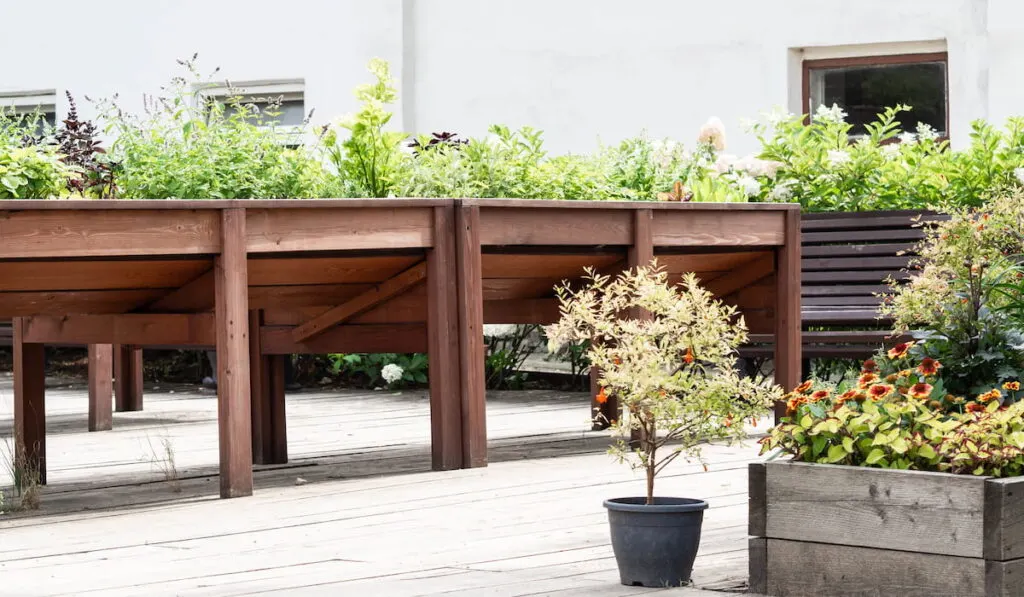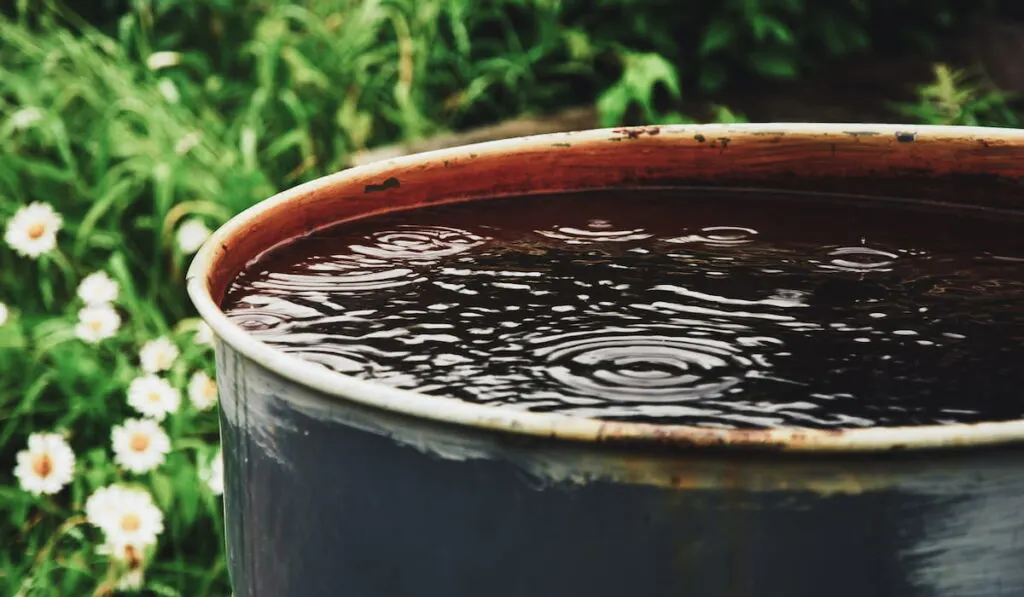The right landscaping strategy reduces the odds of your garden beds flooding and keeps conditions right for your flowers, vegetables, and whatever else you’re growing. This year, as you prepare your garden in the spring, there are things you can do to reduce the chances of flooding that can kill sprouts and delay your garden from blossoming.
How you position your gardens, building in a proper drainage system, and making sure that things are level where you need them to be and sloped in the right direction will help a great deal.
The work to avoid flooded garden beds needs to start before the rain comes in force. You can create a garden that’s impervious to flooding and build drain systems that keep just the right amount of water in.
Don’t let all of your hard work in your garden go to waste! We’ve put together some of the easiest and best ways to keep your garden beds from flooding so you can get the most out of your garden this summer.
Let’s take a look at what you can start doing today!
Table of Contents
Pick the Right Mulch

Whether you’re trying to protect your garden bed or the perimeter of your house from too much rainwater, picking the right mulch is a great place to start. Typically, you’ll want a dense mulch that will prevent water from pooling or rushing into an area.
The mulch will soak up a lot of the water, especially during heavy rains. The next time you go mulch shopping, think about spending a bit more on a more durable, denser mulch that will protect your garden and your home better.
Install a Drainage System
Garden drainage systems can be simple or complex. It all really depends on how complicated your garden is and how much effort you want to put into making the drainage system.
A drainage system can be as simple as one or a series of slopes that push water in one direction. It can be a hole in your landscaping rocks.
There are, of course, several ways you can install a drainage system. For example, the French drain system, which is the most popular form of drainage for yards and gardens, uses corrugated piping to manage dug channels that funnel water out of areas.
You can also use trench systems that are easier to DIY, or some people use rocks to prevent water from getting where you don’t want it to go.
Elevate Your Garden Beds

If you live in an area that gets a lot of rain, one thing you can do to prevent flooding is to elevate your beds. If you’re planting vegetables, herbs, and other things you want to eventually harvest, then raised garden beds are perfect. You can drain water out efficiently, and there is much less risk of any pooling long-term.
Plenty of home improvement stores sell premade raised beds, or you can give making them on your own a try. If you have basic tools, it’s not too difficult. You should be able to knock out the project over a weekend. Of course, it’s something you need to do BEFORE you plant your garden.
Invest in a Greenhouse
Greenhouses are another terrific protection from rain and flooding. People who think installing a greenhouse would be too much work are often surprised at their options these days. Now, you can find good greenhouse options at a variety of prices to suit your budget and your size needs.
They can fit nicely in a small backyard, or you can buy a large one that will take a professional team to build. It all depends on what you’re looking for. In a greenhouse, you can control how much water your plants get and when.
Level Slopes in Your Yard

It’s simple, but the way your garden is sloped will have a massive impact on how it deals with water when it rains. A lot of people pick what looks like the perfect corner or spot for their garden, only to discover later on that it’s where all of the slopes go.
Slopes shouldn’t deter you from where you want to put your garden, but you will have to do some extra work if you live somewhere where it rains a lot.
You can do it yourself if it’s a minor issue, but you may also have to hire out the work to level a sloped yard if it’s too much to handle on your own.
Plant New Grass
Your grass does a ton of work to soak up rainwater and keep it from flooding your gardens. Different areas will determine what sort of grass will work best in terms of performance in different weather and soil types.
You can do some research online as well, but the best way to figure that out is often an old-fashioned trip to the home and garden store in your area. They’ll tell you what type of grass to buy.
Use Plants as Flood Protection
Grass is great protection against flooding, but so are plants. Plants have strong root systems that will soak up a lot of water when it rains, sparing your gardens from sitting water and other water management issues.
You can install plants around your garden to stop water from building up too much when it rains.
Consider Using Rain Barrels

A lot of gardens flood because gutters from the house and other structures empty out into the yard. It’s fine if you don’t get a lot of rain, but what about for places that rain a lot? It’s hard to plant a garden when all of your gutter water is feeding right into the area where you’re planting.
Instead, you can buy and install rain barrels to catch gutter water and keep it from overwhelming your garden. This is also a great option for people who want to catch excess water before it empties out into the street or public sewer system and use it for watering the garden or the grass later on.
Pay Attention to Soil Health
Healthy soil will stop flooding and keep water moving underground. If your yard is full of rocks and poor soil structure, then water logging is more likely. Add more organic matter into your soil to increase its ability to deal with rain.
Composting is a great place to start, and you can also buy enriched soil at home improvement stores or online that is a faster solution to the problem.
Conclusion
Too much water is a challenge for a lot of gardeners. It’s frustrating to have to deal with flooded gardens after you’ve spent so many hours getting things ready.
Rain at the wrong time can push back the harvest or ruin a year’s crop for good. Follow some of these steps to plan ahead and reduce the flooding risk in your garden.
Start by taking small steps and address larger issues as your garden grows and you become more comfortable building a water management system in your yard.
Have some fun with what you try and enjoy the trial and error process that gardeners grow to love!
